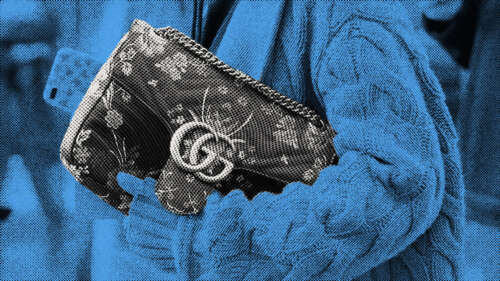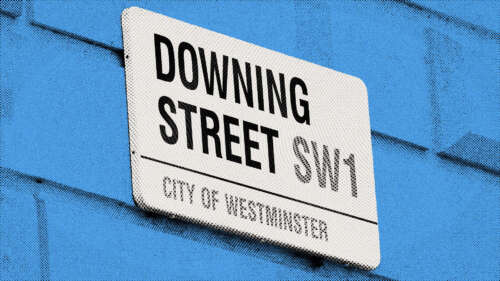At 171-years old, Boots has been a mainstay of the UK high street for almost two centuries. But like other physical retailers, it is suffering from diminished footfall and weakening sales as more customers shop online. In 2018, the pharmacy chain reported its profits had fallen 18.3% compared to the previous year and revenues fell by 2.3%. In order to counter the high street slump, Boots announced in March 2019 that it would be refocusing on its beauty products, launching new independent brands such as Fenty Beauty by Rihanna and Too Faced, as well as revamping 24 of its in-store beauty halls across the country.
In June 2019 it opened a 28,524 sq-ft concept store in Covent Garden, where the entire ground level is dedicated to beauty, while the pharmacy, optician as well as wellness brands are situated on the first floor. Walking into it you’d be forgiven for thinking you were in a Sephora or a Space NK as opposed to a chemist. Beauty it seems, is Boots’ big bet. From a retail strategy, it appears to make sense. Amidst the clouds of high street closures and negative headlines, beauty retail offers one silver lining. A report from market research firm NPD found that 80% of prestige beauty sales still happened in store in 2018, despite the fact that online is growing at a rate of 13%. ‘Shoppers continue to visit shops, boutiques and department stores in vast numbers to immerse themselves in the brand experience, allowing them to touch, feel and experiment with colours and textures,’ says June Jensen, executive director and beauty industry analyst for NPD.
Boots’ refitting their beauty halls aims to address exactly that. The halls remove the traditional brand beauty counters and replaced them with experimental zones where customers can try before they buy, and trend zones to discover new brands and on-trend products. ‘Every brand goes through a period when it needs to regenerate and modernise,’ Helen Normoyle, marketing director of Boots UK, told Marketing Week. ‘Boots is a well-loved brand but love alone isn’t enough. You’ve got to provide people with great reasons to come in and shop day in, day out.’
With all the changes in the past year, we wanted to examine what impact this strategy has had on Boots’ audience. We performed an audience analysis in November 2018 and then conducted the same study again, one year later (we have to admit when running the first study, we didn’t know Boots would be rehauling its beauty offer, but it certainly makes for a good story!). The comparison showcases just how Boots’ pivot has affected who engages with the brand.
BOOTS IN 2018: A MAINSTREAM AUDIENCE
Another interesting insight from 2018, is that Boots’ following is quite national, and not simply relegated to London, unlike other brands. Tribes from Manchester, Nottingham, Sheffield and Sussex all ranked highly.
Overall, the audience seems to be relatively gender neutral, with few specifically gendered tribes, although some such as High Street Shoppers and YouTube watchers skew female - it isn’t overtly the case.
BOOTS IN 2019: A FEMALE SKEW EMERGES
Conducting another study of Boots UK’s audience in November 2019 – one year after Fifty’s previous study, and seven months after Boots’ announced its rehauled beauty strategy – one of the most apparent differences is an increase in gender-specific tribes.
New tribes that appeared this year that skew more female include Trendy Mums, Soap Superfans, London Fashionistas, Gen Z: One Directioners and Creative Female Students – the latter who describe themselves with words like “artist”, “writer” and “feminist”. We cannot know if Boots’ renewed beauty focus is what has attracted more female consumer tribes to its fold, but looking at the top influencers across Boots’ audience, we can see that there has been a definite impact since the strategy was implemented.
In 2019, beauty brands were more present in the list of top 100 influencers across all tribes, some of them making significant in-roads with the Boots’ audience. MAC Cosmetics rose from #86 in 2018 to #39 in 2019, while Benefit Cosmetics went from #28 to #11 and beauty vlogger Zoe Sugg shot up from #100 in 2018 into the top 50 influencers (#45) in 2019. New entrants to the top 100 influencers showcases even further the overlap between those who have an interest in beauty and those who have an interest in Boots. Selfridges (which has a renowned beauty hall) entered the list at #58 while cult American makeup brand Urban Decay, which Boots launched in-store this year made its debut as an influencer at #67.
The comparison between 2018 and 2019 shows that Boots’ beauty strategy is already beginning to resonate with new audiences, broadening its reach particularly amongst beauty-minded women. Using this data, Boots could further engage with new tribes to expand its impact even further. By understanding how its beauty strategy is reshaping its audience, Boots can create more informed media strategies, future sponsorship deals and influencer campaigns while also taking considerate steps to ensure its biggest audience of High Street Shoppers are not left behind.
Catch up on the latest trends and insights here.
See how Fifty can understand your audiences as they evolve. Book a platform demo today.




































